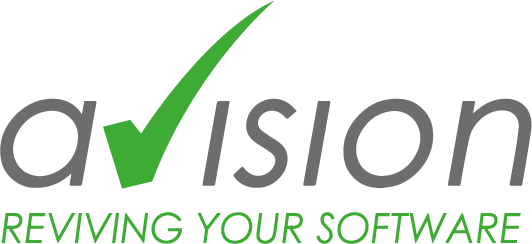Dusty applications can be found in almost every company. When it comes to the question of the right approach to technological legacy, the condition of the software is the most important factor. IT service provider Avision shows that there are real opportunities for modernization and innovation in many digital problem children.
Can it go away or are we dependent on it? Once companies have decided to tackle the issue of legacy software, they have to make far-reaching decisions. Once the facts are on the table, it quickly becomes clear whether the legacy systems are a burden for the IT department or whether they might be an excellent basis for the necessary modernization measures. The decisive factor here is the technological status of the applications.
Legacy software as a problem. The most important question that companies need to ask themselves first: Has the application reached the point of no return? Once the digital tipping point has been passed, modernization or further development of the software is no longer an option – the legacy system becomes a financial black hole. In the worst-case scenario, anyone who has postponed important maintenance measures for too long and foregone innovation will only be left with a complete rebuild of the application, which is associated with high costs. However, legacy systems also become a real problem when new developments do not function completely independently, but are partially dependent on their predecessors. If companies do not succeed in completely replacing the legacy system, they have to maintain and further develop both systems – with increasing complexity and the risk that know-how about the legacy software will be lost over time. Finally, staff changes can quickly lead to experienced developers no longer being available.
Legacy software as an opportunity. Get rid of everything old and start from scratch? Fortunately, this is a worst-case scenario. In many cases, companies not only have meaningful documentation of working methods, functions and processes for their legacy systems, but it is often also possible to modernize them step by step. This approach is not only considerably less risky and more cost-effective, but also creates robust software based on the legacy systems that is fit for the future. To do this, the applications have to be upgraded and analyzed from the ground up. Once you have understood the core and the functionalities, you can gradually start to develop the existing software further. Experience shows that the costs of a well thought-out modernization ultimately amount to 30 to 50 percent of the costs of a new implementation.
“Legacy software can be both a problem and an opportunity – the difference is the willingness of companies to make decisions and plan ahead,” says Nadine Riederer, CEO of Avision. “Anyone who forgoes fundamental modernization processes for too long and simply lets their software continue to run can expect high costs in the end. To prevent this from happening, application modernization should be part of day-to-day business right from the start.”
This press release is also available at www.pr-com.de/de/avision.
Press contact
Avision GmbH
Christina Karl
Marketing
Bajuwarenring 14
D-82041 Oberhaching
Phone +49-89-623037-967
christina.karl@avision-it.de
PR-COM GmbH
Melissa Gemmrich
Sendlinger-Tor-Platz 6
D-80336 Munich
Phone +49-89-59997-759
melissa.gemmrich@pr-com.de



